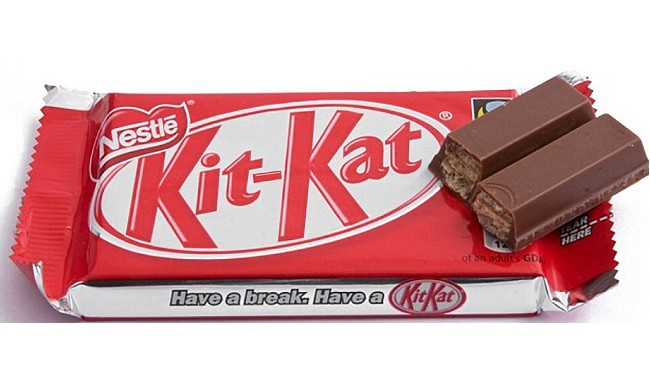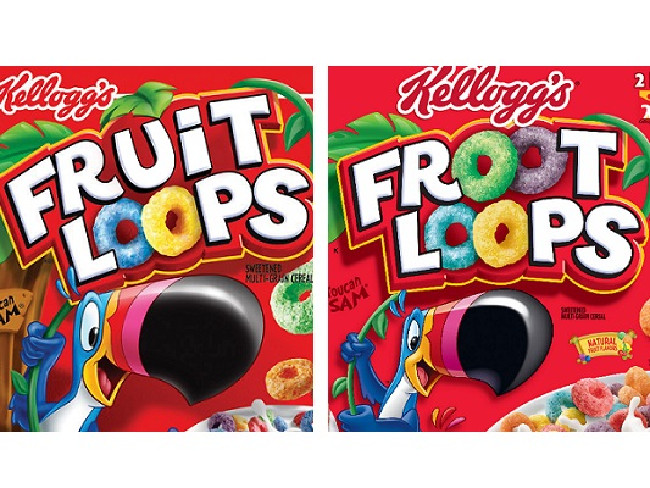
Which of these logos is real, and which is Photoshopped?
“LUKE, I am your father.”
If you asked someone to quote any line from the Star Wars series, that’s the main one you’d hear in response. Hell, it’s one of the most iconic lines in film history.
But here’s an earth-shattering fact: that line was never uttered in any of the movies. The quote is actually, “No, I am your father.”
Feel free to frantically Google that for a moment. We’ll wait.
Have you ever innately believed something so much that — when told otherwise — you couldn’t bring yourself to accept the alternative version, even if it was proven?
There’s a whole bunch of quotes, symbols, titles and historical events like these which have prompted the same bizarre, holy-crap-I’m-now-questioning-the-entire-universe response.
In recent years it’s been deemed the “Mandela Effect”, and a growing cult of believers on the internet have taken the phenomenon a step further.
WHAT IS THE ‘MANDELA EFFECT’?
In 2010, a paranormal enthusiast named Fiona Broome claimed she remembered the news coverage of Nelson Mandela’s tragic death in a South African prison during the 1980s.
When she shared this thought with a group of people, many of them said they remembered this event taking place, or learnt about it in school.

Many could have sworn Nelson Mandela died in prison during the 1980s.Source:Getty Images
Only that never happened. Mandela was alive at the time they apparently vividly recalled this. He died in December 2013, three years after Broome first voiced her theory, while suffering from a prolonged respiratory infection at his home in Houghton, Johannesburg.
But Broome’s justification is even more out-there than her initial thoughts — she argues these “shared memories” that have no present evidence of ever occurring could be due to the existence of parallel universes that intertwine and collide.
While this theory may sound ridiculous, she’s gained a solid online cult following, writing articles, books and giving speeches on related subjects.
Let’s cut to some eerie examples people have brought up online.
Growing up, you probably watched the Looney Toons on a Saturday morning right? Bugs Bunny? Daffy Duck?
Many people could probably recall a scene or two, and visualise the “LOONEY TOONS” logo perfectly in their head:

What’s wrong with this photo?Source:Supplied
Plot twist: it’s actually spelt “Looney Tunes”. And always has been. It never changed, there’s zero evidence to suggest it was spelt any other way, and yet people vehemently believe it’s written as the former.

Wait, what?Source:Supplied
Same story with the Ford logo. Look carefully — did the ‘F’ always have this little tail on the end?

Was that squiggle always there?!Source:Supplied
Yep. It’s always had that damn pig’s tail. Since 1912, when Ford was first established, the “F” has had that damn pig’s tail. But something about it may look ... out of place.
When Broome started publicising this weird memory-tricking phenomenon online, a cult of believers formed and grew, trying to work out which experiences they were so sure of were apparently falsehoods.
One of the most prominent examples is that of the Berenstain Bears, a children’s book series created in the 1960s.
Believers familiar with the books claim it was spelt Berenstein Bears, despite the fact that the creator’s son himself said it was always the former.
People went as far as to scour through the internet for proof, find alternative spellings in old newspaper clippings (most likely just typos) and post them as evidence of colliding realities at play.
No misprinted versions of the books have ever been created, let alone distributed, but people still insist they can visualise the logo with the “e”.

A scene from a YouTube clip attempting to prove the spelling ‘Berenstain’ is somehow a trick.Source:Supplied
Another common example is of “Tank Man”, one of the most iconic symbols of the Tiananmen Square massacre in 1989.
Many theorists claim the protester who stood in front of the tanks was run over by them. They insist they were taught this in school, saw it in textbooks, watched the footage and can still visualise it perfectly according to their memory.
Yet the man was never run over. While it’s unknown whether he went into hiding or was executed by authorities in the aftermath of the protest, he was definitely not run over by the tanks themselves.

Some people swear they’ve seen footage of the Tank Man, pictured above, getting run over by the tanks.Source:Supplied
There are plenty more examples that have people scratching their heads.
Kit Kat doesn’t have a dash in its logo. Never has and never will.

See that dash? Photoshop.Source:Supplied
Curious George has never had a tail.

This is the real Curious George. No tail, see?Source:Supplied
Oh, and what about this popular sugary breakfast cereal below? Which version is real, and which is Photoshopped?

It’s ‘FROOT LOOPS’, not ‘FRUIT LOOPS’.Source:Supplied
The version on the left is fake.
And in Silence Of The Lambs, Hannibal Lecter (Anthony Hopkins) never actually says “Hello, Clarice,” even though it’s one of the movie’s most “iconic” lines.

Hannibal Lecter never actually said the line, “Hello, Clarice”.Source:Supplied
SO WHAT’S THE EXPLANATION?
Some of the examples above have a more logical explanation.
For example, “Luke, I am your father,” is frequently quoted in popular culture. Even if you haven’t watched the Star Wars series, you still know that quote.
It’s been pointed out that people would have substituted “No” with “Luke” in order to keep the context in place when quoting it. If you just went around saying, “No, I am your father,” you’d potentially sound like a bloody weirdo, or a runaway guest from The Maury Povich Show.
Similarly, a misconception that the United States has 52 states has been likened to the Mandela Effect. This more likely stems from the mistaken belief that Puerto Rico and the District of Columbia are additional states.

Don’t trust your memory. Darth Vader never said “Luke, I am your father”.Source:Supplied
When it comes to symbols, like the “F” in “Ford” or the Fruit Loops logo, the most likely explanation is that our brains don’t always register tinier details in everyday objects.
Therefore, we can’t remember when said detail is pointed out to us, and we assume it must have never existed in the first place.
In 1978, a famous psychologist named Elizabeth Loftus conducted “The Misinformation Effect”, a study which found one’s recollection of memories can be distorted by subsequent information.
Loftus said: “The misinformation effect refers to the impairment in memory for the past that arises after exposure to misleading information.”
In other words, if someone says or implies that something looks a certain way, there’s a natural tendency to believe them if you’ve never paid close attention to it.
In some cases, the misleading information can actually overwrite one’s original memory, if it’s presented in a way that makes it seem more plausible.
Well, that or Broome is correct, and we’re all part of a complex colliding time travel loop.
Be afraid of that. Be very afraid.
Optical Illusions2:49

Optical illusions have been around for eons, and continue to captive and confuse people worldwide








